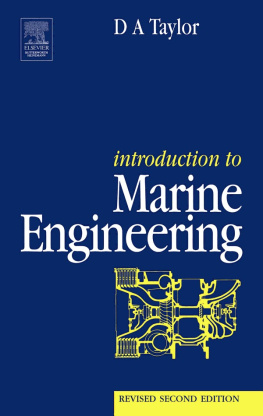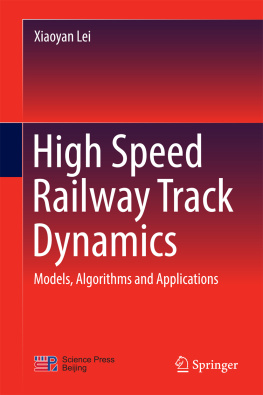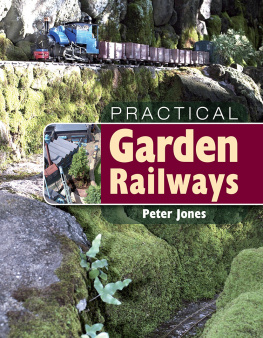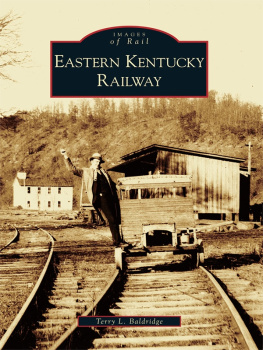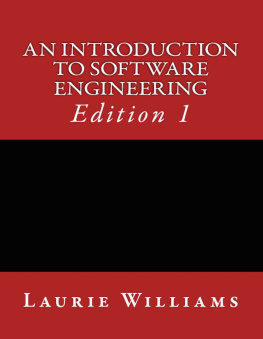UNDERSTANDING
TRACK ENGINEERING
Edited and published by
The Permanent Way Institution
Printed in Great Britain by The Lavenham Press
Copyright 2015 The Permanent Way Institution
The moral right of the author has been asserted.
Apart from any fair dealing for the purposes of research or private study, or criticism or review, as permitted under the Copyright, Designs and Patents Act 1988, this publication may only be reproduced, stored or transmitted, in any form or by any means, with the prior permission in writing of the publishers, or in the case of reprographic reproduction in accordance with the terms of licences issued by the Copyright Licensing Agency. Enquiries concerning reproduction outside those terms should be sent to the publishers.
Matador
9 Priory Business Park
Kibworth Beauchamp
Leicestershire LE8 0RX, UK
Tel: (+44) 116 279 2299
Fax: (+44) 116 279 2277
Email:
Web: www.troubador.co.uk/matador
ISBN 978 1784629 618
British Library Cataloguing in Publication Data.
A catalogue record for this book is available from the British Library.
Matador is an imprint of Troubador Publishing Ltd
INTRODUCTION
The Permanent Way Institution was founded in 1884 and since that date it has strived to provide training, development and networking opportunities for its membership. The Institution has a proud history of publishing textbooks which help the industry to share knowledge and experience. This new book has its roots deep in a previous publication - the 6th Edition of British Railways Track (the authors of which are acknowledged in that publication but I also thank them again for the information carried forward to this new book).
There has been significant changes in the rail industry since those authors produced the chapters for the 6th Edition back in 1994 with an industry on the cusp of privatisation. Twenty years on we have a very different landscape and a need to present a book to the industry. Firstly, to aid new entrants understand the basic principles, and secondly, to provide a definitive source of reference for more experienced engineers.
Understanding Track Engineering draws together the key principles of the track engineering discipline, set in the context of todays railway. I commend it to the industry.
Steve Whitmore
President, Permanent Way Institution
FOREWORD
The role track engineering plays in ensuring safe, efficient rail transport is invisible to rail users and thats how it should be. Track Engineers need a wide variety of skills and comprehensive knowledge of this complex subject to perform at their best, delivering safe and efficient track infrastructure. This book is essential reading for all track engineers covering, as it does, the whole spectrum of track engineering practice.
Understanding Track Engineering starts with the background to track engineering and its place in the railway engineering system. There is then comprehensive coverage of track components; rails, sleepers and fastenings. The book moves on to the design of railway layouts in plain line and switches & crossings, dealing with geometric principles and their practical application.
The support provided by the ballast and earthworks is covered next, followed by off-track management of the lineside. These elements of track engineering are vital to safe and efficient operation but can be overlooked by inexperienced engineers, hence their inclusion here.
Maintenance of the track and its geometry is covered in broad terms as an introduction to the subject. This area is covered comprehensively in the PWIs detailed books Plain Line Maintenance and S&C Maintenance.
The final elements are track renewal and new railway construction, again summarised as an introduction to these two areas.
I am confident that this book will be found widely on the desk of track engineers. It is an excellent introduction for those starting out in the rail industry and an invaluable reference work for engineers who have chosen rail as an exciting and involving career.
Brian Counter
Technical Director, Permanent Way Institution
ACKNOWLEDGEMENTS
The PWI gratefully acknowledges the contribution made by Dr Brian Counter, Technical Director PWI, in the creation of this book.
Starting with British Railway Track 6th Edition as the basis, he has restructured and updated the content to ensure that it is relevant to current railway practice. In this endeavour he has been ably assisted by PWI Fellows Malcolm Pearce (Track Renewals), David Johnson (Gauging), Colin Wheeler (Law and Safety) Member, Vice President Paul Bull (Rails) and Richard Johnson (Welding).
The PWI would also like to acknowledge the contributions of the following to British Railway Track 6th edition on which this book has been based.
A. Blower, P. O. Jennings, T. A. Jipson, D. Hill-Smith, C. F. Bonnett, R. M. Heath, J. McCahill, J. K. Wright, F. J. Roberts, A. J. McCluskey, P. Grisdale, E. A. Labrum, D. R. Gillan, N. J. Duffy, J. S. Bell, A. Cooksey, J. B. Ellis, D. Ingram, L B Foster, M. B. P. Allery, D. Cook, D. Lindsay, J. C. Morgan, D. Stuckey, J. D. Strange, P. Hunt, R. Bance & Co Ltd, Pandrol International Ltd, J. McMorrow, D. J. Ayres, R. W. Collingwood, J. H. B. Cook, M. A. Winn, D. L.Cope, J. C. Morgan, R. B. Lewis, R. Harvey and R. J. Gostling,
Production and printing of the volume has been led by Alison Stansfield, Communications Director PWI with layout and formatting by Holly Hayley and Kerrie Pearson.
Photographs have been kindly provided by :
Cross Country Trains, London Underground, Jay Jaiswal, AREMA, Nexus, Network Rail, Thermit Welding (GB) Ltd, Railtech UK Ltd, Rail Technology.com, Cemex Rail Solutions, Rail One, LCR Ltd, RailPictures.net, Steven Pearson, Balfour Beatty Rail Technologies, D Ratledge, Rail Infrastructure, Jrg, Schnabel, Carillion, Colas Rail, Docbrown.info, Scalefour Society,
CONTENTS
CHAPTER 1
INTRODUCTION
1.1 THE ORIGINS OF TRACK (THE PERMANENT WAY)
The term track is commonly used worldwide to represent guided forms of way as far as transport infrastructure is concerned, however the expression permanent way is deep rooted in the development of this specialist engineering subject. The term permanent way was created in the early 19 th century to distinguish between the final constructed railway and any temporary ways or tracks that were used on a temporary basis, usually for hauling of materials or excavated earth and rock.
Wheeled transport before the middle of the 19th Century implied exclusively wheels with rigid tyres. It was found at a very early stage of the development of land transport that most road surfaces and foundations were very quickly damaged by heavy wagons on rigid tyres, and mans inventiveness almost as quickly found that by providing a surface of stone slabs or wooden baulks a much more nearly permanent hauling way could be achieved. Examples of such hauling ways can be found in connection with colliery operations as early as the 16th Century, and were common by the early 18th Century.
The effects of the Industrial Revolution were initially to develop this idea by adding wrought iron plates to reduce wear on the wooden baulks. As shown in
The combination of improved track and steam locomotion was so effective that railways effectively monopolised medium to long distance land transport for the remainder of the 19th Century, spreading from their centre of invention in North East England across most of the world. Only the inventions of the pneumatic tyre, the internal combustion engine, and smooth hard roadway pavements restored the competitive position of roads in the early 20th Century, making possible the much more diverse inland transport scene which is so familiar today, in which railways are seen as having the uniquely identifying feature of steel wheels running on steel rails.





